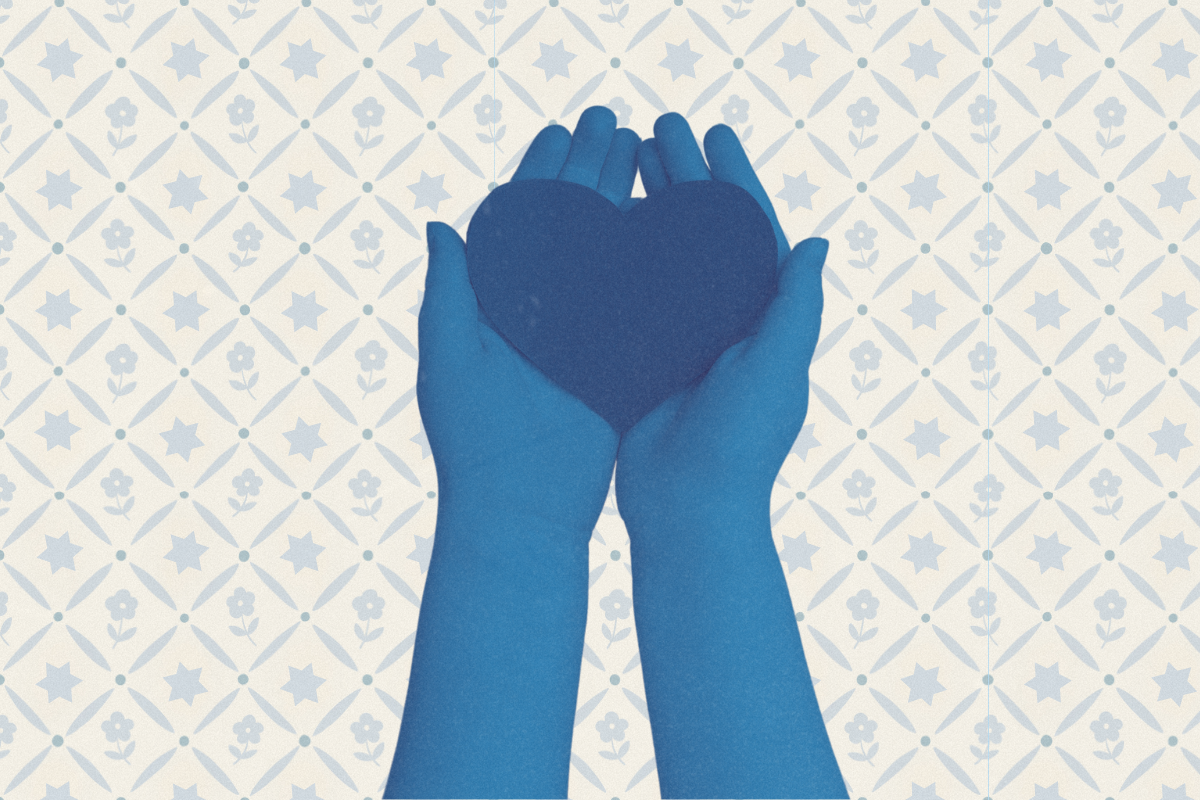“Mommy, I am filling your bucket,” my 3-year-old said as he handed me my lukewarm coffee mug. “You are filling my coffee?” I asked. “No, mommy, your bucket. I am doing a chesed,” he said as he rolled his eyes, giving me the “duh mom” look.
“Thank you so much!” I replied, sipping my coffee but still having no clue what he was talking about.
I folded the conversation in my mind. A few days later, I received the weekly email from his teacher, explaining that chesed, a Jewish value meaning acts of kindness, was being taught with the bucket metaphor based on the book “Have You Filled a Bucket Today? A Guide to Daily Happiness for Kids,” by Carol McCloud.
We talked about the idea of being kind to others with our words and actions and how this fills an imaginary bucket with happiness. Next week we will have a Chesed Bucket in our classroom and the teachers have been quietly noticing when children do a chesed (loving act of kindness) for others. We have been writing down each chesed on a small blue strip of paper which we staple together in the shape of a drop of water. Each Friday we add the “drops” to our class bucket in the hopes to fill it to the top with acts of chesed as the year continues. Some examples of the acts of kindness thus far are:
-a child helped another child put on their socks after rest
-a child gave their hula-hoop to someone when they noticed that child didn’t have a hula-hoop and really wanted one
-a child offered to take the bag of hot lunches from an administrator as they saw her walking toward our classroom.
My heart melted reading the email. Many days, my son won’t offer up any details about his school day so I was surprised and impressed with how much of the kindness lesson he was absorbing. It also made me realize that this moment was worth seizing. He wanted us, his family, to understand chesed and engage in caring acts. Even if young kids can’t verbalize or fully grasp concepts, they can recognize when their heart feels full, warm and fuzzy.
My son attends a Jewish Montessori school in Brooklyn, so I was curious if the kindness lesson was being taught as a religious component, or the social-emotional curriculum. Upon more research, I was thrilled to find that lessons about kindness are taught in preschools around the country, regardless of background. It is within those ages that children gradually learn to manage their feelings and connect how their actions may impact someone else’s feelings. Three-year-olds may be unable to directly communicate kindness toward others but demonstrate caring through body language or other actions. As friendships develop, 4-year-olds are influenced by the kind acts of their peers.
However, our kids graduate preschool and enter a world where grades, achievements and personal success matter more than compassion, fairness and kindness. A study by Making Caring Common of middle school and high school students found that almost 80 percent of the youth ranked their achievements or happiness higher than caring for others and stated, “My parents are prouder if I get good grades in my classes than if I’m a caring community member in class and school.” However, when their parents were questioned directly, 96% said moral character in children is “very important, if not essential.”
The problem is there is a gap in what parents say are their top priorities for children, and what children perceive these priorities to be.
Fellow parents, we aren’t sending the right messages. We need to teach those messages, instead of simply expecting them to be absorbed without our participation and engagement. Of course, we all want our kids to be happy, but we need to refocus by looking at where happiness comes from. A cookie after school may make a child happy, but that immediate source of happiness is not helping create empathetic, kind individuals. One of the top sources of happiness for both adults and children is having meaningful relationships, and there are two other circumstances that predict happiness: having a job or hobby that they love and feel challenged doing and helping others through volunteer work, random acts of kindness or another type of action of that nature.
So, it is our job to help our children form meaningful relationships, foster a passion for a hobby and find ongoing opportunities to practice acts of kindness (don’t forget strengthen their empathy skills, and teach them to be gritty and resilient). If you are exhausted even thinking about this, you aren’t alone. Parenting is hard work, but the results are worth it. I want my kids to grow up in a world where kids have higher self-esteem, are accepted by their peers, have less stress and reduced depression, better attention spans and less bullying. Don’t you?
When I was a teenager, my dad said this to me a few times as he shuttled me to and from friends’ homes: “If you can do something nice for someone and it’s not hurting you in any way, you should do it.”
We can start by filling someone’s bucket today, because as my son reminds me, “When you fill someone else’s bucket, you fill your own bucket, too.”







